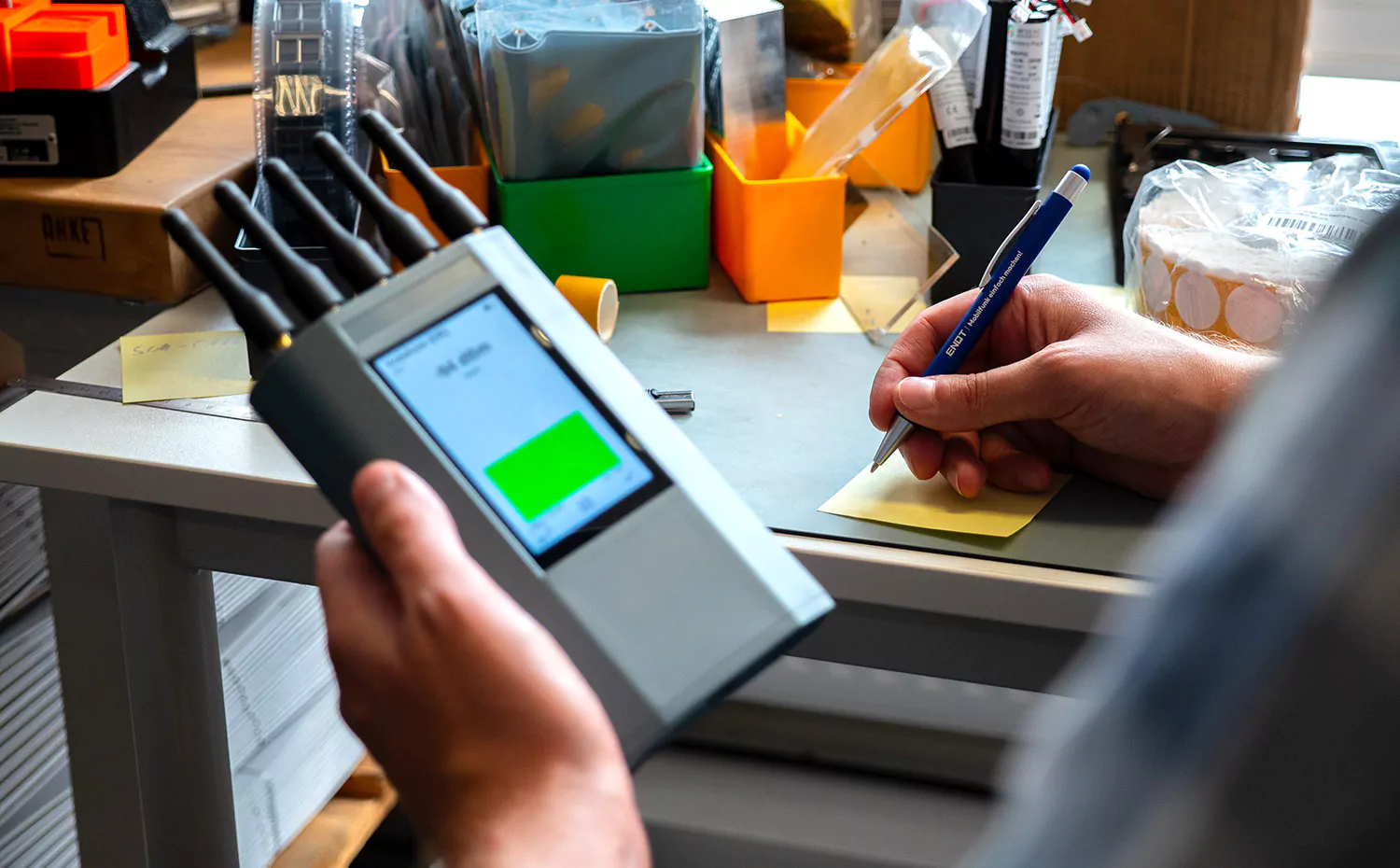This includes smartphones, cab radios, satellite phones, but also official radios for police and emergency services. Location-based applications such as amateur radio and the like are also included.
The physics behind it:
The basis of mobile radio is electromagnetic waves, which are generated at specific intervals and speeds. The waves propagate in a circle around the antenna at almost the speed of light. The oscillations are picked up and processed by a second subscriber, for example a mobile communications station, via an antenna.
Problems arise due to the signal being reflected by buildings, trees, the ground and the like. As a result, signals arrive at a receiver multiple times, so messages received twice must be filtered out.
The attenuation of a mobile radio signal depends on various factors. Objects in the signal path account for most of the attenuation. A metal control cabinet door, for example, can make a significant difference in signal strength. Thick concrete walls or buildings between the cell tower and the terminal also have a strong influence on attenuation.
As with loudness, the attenuation of a signal is measured in the logarithmic unit decibel.
The history of German mobile communications
The history of German mobile communications goes back to the 1950s. Initially, a completely analog system was used to transmit data. It was not until the 2000s that the standard changed to digital transmission:
– Deutsche Post’s A-network went into operation in 1952. A maximum of 10,000 units could use the network
– in 1972, the B network took over operations. This replaced manual switching with self-dialing. A maximum of 27,000 units could use the network
– in 1986, the last generation of the analog network began operation. The C-network continued to be used until 2000, when it was shut down
– in 1992 and 1993, the first digital networks were launched. Both Telekom and E-Plus retain their letter numbers to this day. Telekom D network, E-Plus E network
Mobile communications standards:
The first digital network (2G) was based on the GSM (Global System for Mobile Communications) standard, which is still used today for simple telephony and SMS.
It was not until the introduction of the 3G mobile communications standard that the Internet was readily accessible from everywhere. By the end of 2022 at the latest, the system based on the UMTS (Universal Mobile Telecommunications System) standard will be switched off. The reason for this is the ongoing expansion of 4G and 5G networks, which replace and improve the tasks of 3G.
While the 4G LTE (Long Term Evolution) essentially brings higher speeds and lower latency/ping times, the 5G standard is capable of much more.
The fifth generation (5G) offers improved security protocols, minimal latency/ping times and enormously high speeds, both down and up (up to 10Gbit/s). This makes it possible to securely transport large amounts of data from A to B in real time. The applications for this are complex. Whether for IoT applications, e.g. for energy management, a production line or for real-time connections of medical staff on the other side of the world to an operating room.



